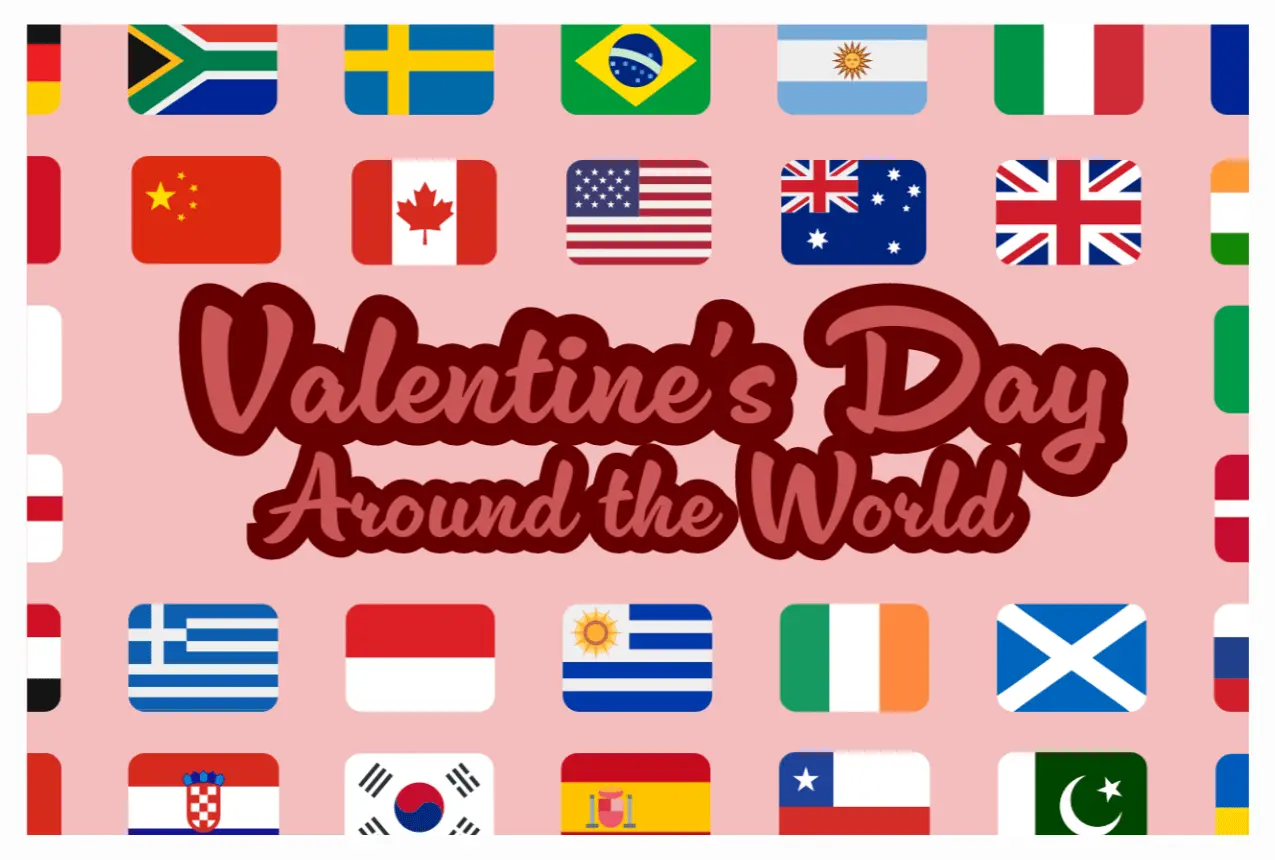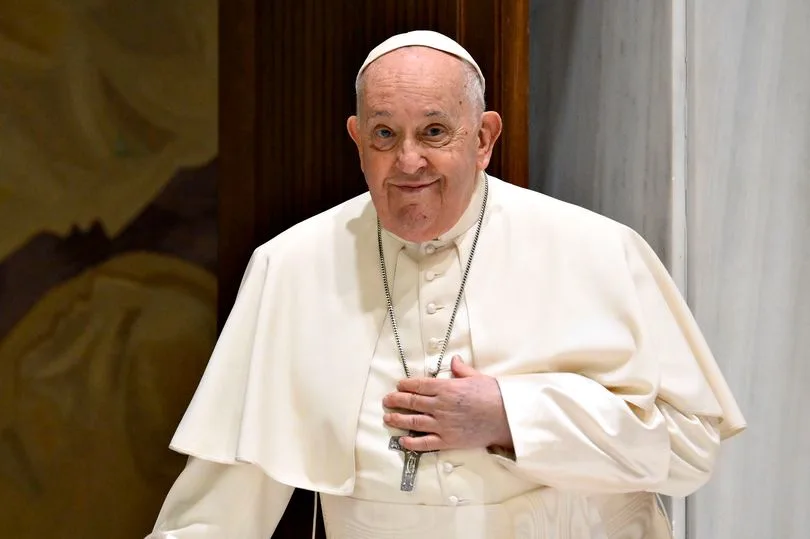Valentine’s Day, celebrated annually on February 14, is often associated with red roses, heart-shaped boxes of chocolate, and candlelit dinners. Originating from Christian and Roman traditions, it has evolved into a global holiday dedicated to expressing love and affection—not just between romantic partners, but also among friends and family. However, the way this holiday is observed varies dramatically across cultures, reflecting each society’s unique customs, values, and perspectives on love.
In this article, we take you on a journey across continents to discover how different countries celebrate Valentine’s Day. Some follow Western commercial trends, while others have crafted entirely unique traditions. Let’s explore how the world says “I love you.”
1. Japan – Giri and Honmei Chocolates
In Japan, Valentine’s Day has a special twist: it’s women who give gifts to men. Specifically, chocolate. But not just any chocolate—there’s a cultural nuance here.
Women present giri choco (obligation chocolate) to male friends, coworkers, and superiors as a social courtesy. The word “giri” implies duty, and the gesture is less about romantic interest and more about politeness or respect.
On the other hand, honmei choco is reserved for boyfriends, husbands, or men they truly love. Often, women will go the extra mile by making homemade honmei chocolate, showing the depth of their feelings.
One month later, on White Day (March 14), men are expected to return the favor, typically with white chocolates or gifts three times the value of what they received.
2. South Korea – A Celebration Every Month
South Korea has embraced Valentine’s Day with enthusiasm, turning it into a series of love-themed days throughout the year.
- February 14: Women give chocolate to men.
- March 14 (White Day): Men return the gesture with gifts.
- April 14 (Black Day): For those who didn’t receive anything on the previous two dates, singles get together to eat jajangmyeon (black bean noodles) and commiserate.
Beyond these, there’s a romantic day every month—Rose Day, Kiss Day, Hug Day—creating a year-round celebration of love in various forms.
3. France – The Epicenter of Romance
France, long considered one of the most romantic countries in the world, celebrates Valentine’s Day in ways you might expect—romantic dinners, flowers, and poetic gestures.
One historic tradition, however, stands out: la loterie d’amour (the love lottery). Single people would gather in houses facing each other and call out the names of potential matches. If a man didn’t like his match, he would leave her, and the rejected women would gather for a bonfire to burn pictures of the men who spurned them. Eventually, the practice was banned due to its chaotic nature.
Today, the French prefer more intimate expressions of love, like handwritten notes and luxurious gifts. In the village of Saint-Valentin, special events, decorations, and vow renewals take place every year, attracting couples from around the globe.
4. Denmark and Norway – Secret Admirers and Snowdrops
In Denmark and Norway, Valentine’s Day has grown in popularity over the past few decades. One charming tradition is the exchange of gaekkebrev—a “joke letter” sent anonymously.
Typically, men write poems or rhyming love notes, using dots instead of signing their name. If the woman guesses who sent it correctly, she earns an Easter egg later that year. If not, she owes one to the sender.
Another gesture is the giving of snowdrops (delicate white flowers) instead of red roses, symbolizing the purity and newness of young love.
5. Philippines – Mass Weddings
Valentine’s Day in the Philippines has taken on a very public and celebratory tone in recent years. One of the most iconic traditions is the government-sponsored mass wedding ceremonies held on February 14.
Hundreds—even thousands—of couples gather in public spaces to exchange vows and rings. These ceremonies are often officiated by mayors or other public figures and are seen as a romantic and cost-effective way to get married.
The Philippines’ Valentine’s Day also mirrors Western traditions like exchanging cards and chocolates, but the emphasis on community love and unity makes it particularly special.
6. South Africa – Heart on Your Sleeve
In South Africa, women literally wear their hearts on their sleeves on Valentine’s Day. Inspired by the Roman festival Lupercalia, some women pin the names of their crushes on their sleeves for the world to see.
This bold move often leads to love connections, as the men learn who admires them.
South Africans also celebrate with romantic dinners, flowers, and music festivals, blending traditional and modern customs.
7. Italy – Love Locks and Chocolate Baci
Italy, with its storied history of art, poetry, and romance, has deeply embraced Valentine’s Day, although it’s not originally an Italian tradition.
Couples often flock to romantic spots like Verona—the home of Shakespeare’s Romeo and Juliet. In fact, thousands of letters addressed to Juliet arrive there each year, and a group of volunteers responds to them.
In various cities, especially Rome and Florence, couples attach “love locks” to bridges or fences and throw away the key, symbolizing eternal love.
Chocolate plays a big role too—particularly Baci Perugina, chocolate kisses with love notes hidden inside.
8. Brazil – Dia dos Namorados
Valentine’s Day isn’t celebrated on February 14 in Brazil. Instead, Brazilians celebrate Dia dos Namorados (Lovers’ Day) on June 12, the eve of Saint Anthony’s Day, the patron saint of marriage.
The day is marked with romantic dinners, flowers, and music, similar to other countries’ Valentine traditions. However, in some regions, single women perform rituals known as simpatias to help them find a good husband.
Brazil intentionally avoids February 14 due to its proximity to the country’s famous Carnival celebrations, which dominate the cultural calendar.
9. India – Love Amid Tradition
Valentine’s Day has gained significant traction in India, particularly in urban centers. Malls, restaurants, and social media campaigns ramp up activity leading up to February 14.
However, the holiday has also sparked controversy. Some conservative groups see it as a Western import that clashes with traditional values, occasionally protesting public displays of affection.
Despite this, millions of young Indians embrace the opportunity to celebrate romantic and platonic relationships alike—sharing roses, gifts, and heartfelt messages.
10. Germany – Pigs and Love Notes
In Germany, Valentine’s Day includes the exchange of traditional gifts like chocolates, flowers, and heartfelt notes. But one unique symbol of love is the pig.
Pigs represent luck and lust in German culture, so you’ll find Valentine’s cards, stuffed animals, and chocolates featuring pig imagery—sometimes even with wings.
Another charming tradition is the giving of Lebkuchenherz (gingerbread hearts), decorated with colorful icing and sweet messages, often seen at fairs and festivals.
11. Saudi Arabia and Other Parts of the Middle East
In more conservative societies like Saudi Arabia, public celebration of Valentine’s Day was once restricted due to cultural and religious norms. However, recent reforms have led to a gradual softening.
Florists and gift shops now openly sell red roses and heart-shaped products in the lead-up to Valentine’s Day. Many couples celebrate in private or during special events hosted in hotels and cafes.
In the UAE, Lebanon, and Egypt, Valentine’s Day is widely celebrated, especially in cosmopolitan cities. Dinner cruises, live concerts, and social media love declarations are common.
12. United States – The Global Influencer
Finally, we return to the United States, arguably the biggest commercial driver of modern Valentine’s Day. Americans spend billions annually on flowers, candy, dining out, jewelry, and greeting cards.
Valentine’s Day in the U.S. extends beyond romantic love, encompassing children, teachers, and coworkers. Schools often host classroom Valentine exchanges, while adults participate in “Galentine’s Day” and “Palentine’s Day” to celebrate friendship.
The holiday’s media presence—from romantic films to marketing campaigns—has helped shape global perceptions of what Valentine’s Day looks like, though many countries have added their own flavor.
Conclusion: Love Knows No Borders
Valentine’s Day proves that love—whether romantic, familial, or platonic—is a universal language. While the modes of expression differ from Japan’s honmei choco to South Africa’s sleeve-pinned names, the heart of the holiday remains the same: honoring those we care about.
In an increasingly connected world, these diverse traditions remind us of the richness in how different cultures celebrate love. Whether you’re giving a rose, writing a poem, or sharing noodles on Black Day, what matters most is that the sentiment is genuine.
So this February 14—or whichever date your country chooses to honor love—remember that the tradition you follow is part of a beautiful, global celebration of the human heart.







